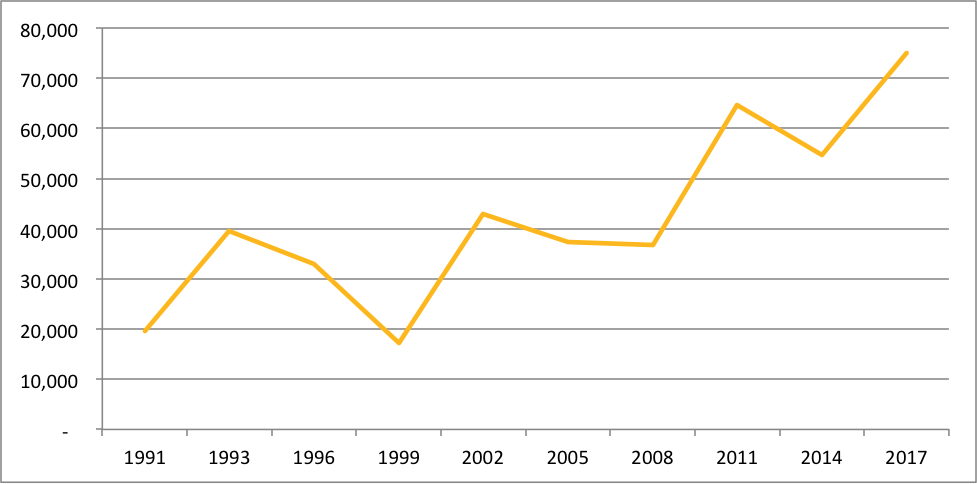In a recent presentation to City Council, the New York City Department of Housing Preservation and Development released its Initial Findings from the 2017 Housing and Vacancy Survey, which collects a number of different housing data in the city every three years.
One of the biggest findings is that over the last three years the number of housing units available for “seasonal, occasional, or recreational” use jumped by more than 20,000. The number of these pieds-a-terre and vacation homes now stands at 74,945 – the highest in history. To put it in perspective, this is more homes than in Brooklyn Heights, Jackson Heights, and Prospect Heights - combined.

Number of homes used for “seasonal, recreational, and occasional use” in New York City, 1991 - 2017
Units used as pieds-a-terre or vacation homes are counted as part of a subset of homes that are “vacant but unavailable for sale or rent.” There’s always been housing kept off the market in New York: used as pieds-a-terre, caught in legal disputes, undergoing renovation, and a host of other reasons. But it’s never been like this. In the late 90s, less than 3% of the total housing stock was vacant and unavailable for sale or rent. Now the number is more than 7%. During this time the number of pieds-a-terre have quadrupled.
The problem has gotten so bad that over 90% of the growth in housing between 2014-2017 simply disappeared: while the city added 69,147 homes, it added 62,854 homes that are “vacant and unavailable for sale or rent.”
In a city with an ongoing and severe housing emergency it just doesn’t make sense to keep 75,000 apartments reserved for people who don’t live here and don’t pay New York City income tax. If you own a pied-a-terre or vacation home in a place with a housing emergency – like New York – the choices should be simple: move in full-time, make it available as a home for someone who will use it as a full-time home, or pay a surcharge for contributing to the housing emergency.

